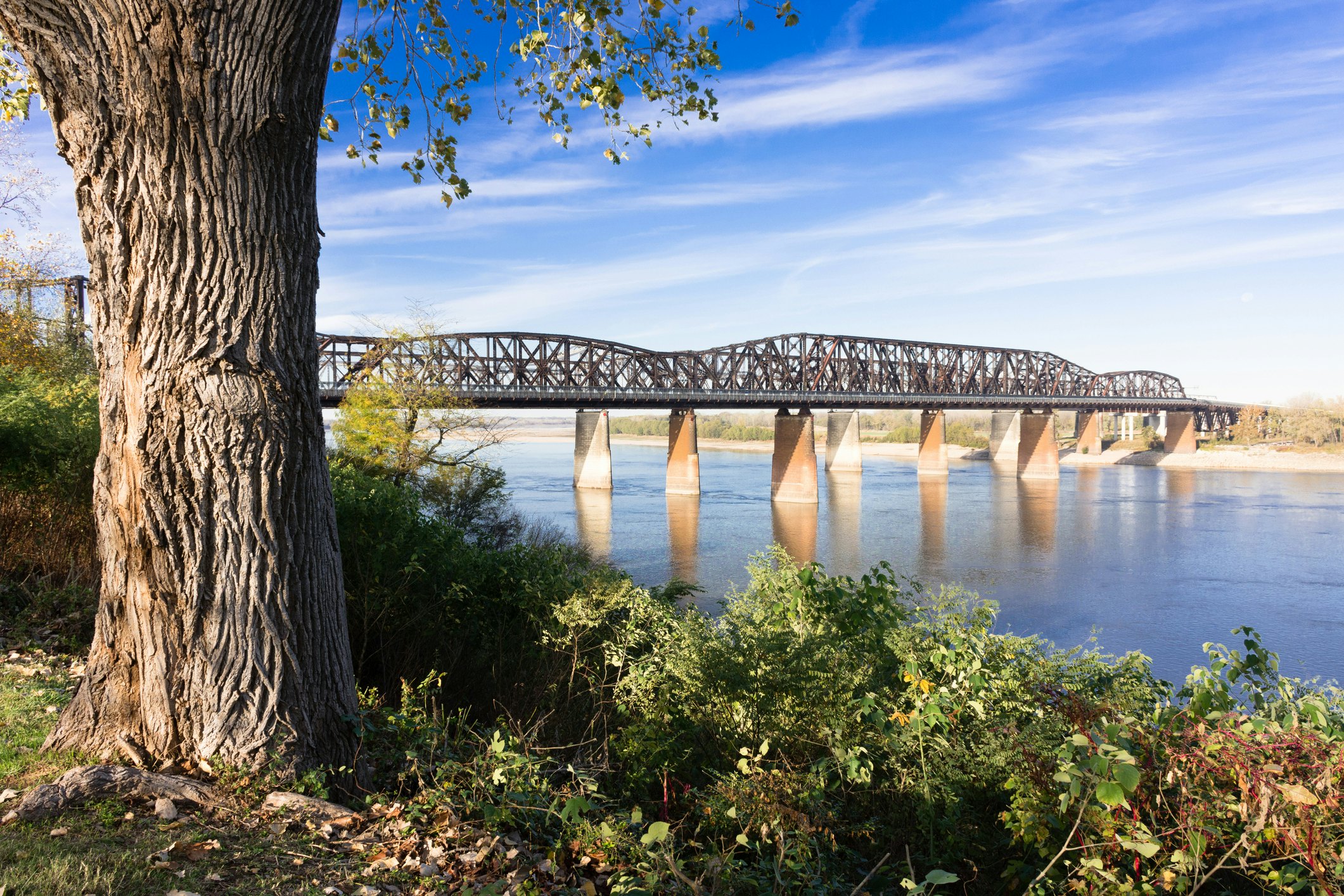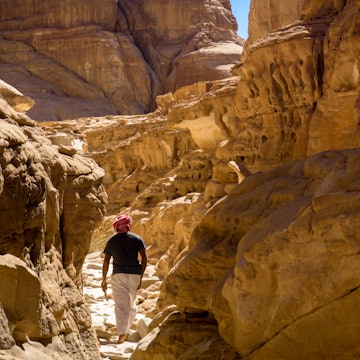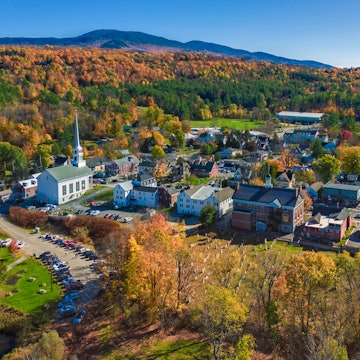

Experience the best of Memphis for absolutely nothing with this guide to the city's free things to do © Sean Pavone / Shutterstock
Walk the streets of Memphis and you can almost feel the bones of this mid-size city rise up from the pavement. There’s a reason this place has an outsized impact on American culture.
It was from Memphis that the first echoes of rock n’ roll radiated out across the southern airwaves before going on to change the world. Decades earlier, it was in Memphis that the Delta Blues began to migrate north towards a date with electricity and destiny in Chicago.
And it was in Memphis that the sounds of Stax Records helped define the Civil Rights era, putting out hits with a frequency and quality rivaled only by Motown. The city has been a diamond in the rough for blue-collar tourists for generations, and though the seeds of gentrification are taking the edges off of some of its gritty areas, Bluff City remains one of the best bang-for-your-buck cities in the country.
With no shortage of American history tugging at their seams, here are the best free activities you can enjoy in Memphis.
1. Reflect on Dr King's legacy at I AM A MAN Plaza
Music may dominate the identity of Memphis, but the shadow of Martin Luther King Jr’s final days looms large over the city. I AM A MAN Plaza opened in 2018, one day after the 50th anniversary of King’s assassination on a Bluff City balcony in 1968.
The plaza features a memorial to King and other heroes of the Civil Rights movement and is located within walking distance of Beale St. Look for it on the south side of Clayborn Temple, an enormous church – now partially abandoned – that served as a rallying point for the sanitation strikes that brought King to Memphis during that fateful week.

2. Pay respects at the National Civil Rights Museum
No visit to Memphis is complete without a tour of the National Civil Rights Museum, located off South Main St at the Lorraine Motel.
The museum charges admission, but those traveling on a budget or passing through after hours can visit the plaza for free and pay their respects to Dr King in front of the balcony where he spent his final moments. A wreath permanently marks the place he was standing when an assassin’s bullet took his life.
3. Catch modern blues bands at Handy Park
Visitors to Beale St don’t have to spend a dime to soak in live music at Handy Park. This plaza at the eastern end of Beale is named for WC Handy, an early-20th-century composer dubbed “Father of the Blues.” Long before six strings and electricity defined the sound of the blues we know today, Handy’s trumpet reverberated around Beale St’s clubs in a 12-bar blues that became a cornerstone of modern music.
A century after Handy was topping the charts, modern blues bands play beside his statue on weekend nights.
4. Savor the Listening Lab at Crosstown Concourse
The 640,000-sq-ft behemoth Sears Crosstown building, in Midtown, now known as the Crosstown Concourse, was built in 1927 and in its heyday it shipped products of all shapes, sizes and functions to thousands of people per day. Today, the building has found new life as a hub of craft shops, fusion restaurants, housing, public healthcare, art galleries and even a brewery.
While a stroll through Crosstown Concourse alone can be entertaining; a better bet is to head upstairs to the Memphis Listening Lab. This self-branded “public records” house contains tens of thousands of vinyl records, CDs and books documenting music history. Thanks to meticulously designed listening spaces and a customized Sound Room from ultra-high-end speaker maker EgglestonWorks, it’s also one of the best places on the planet to listen to music.
There is no fee to visit the Memphis Listening Lab, a place that takes a top spot for the best free place to get lost for hours in town.

5. Find familiar faces on Memphis' statues
Handy’s statue isn’t the only reminder of bygone sounds – a 30-minute tour of downtown and Midtown could also put you face to face with Elvis Presley, Bobby “Blue” Bland, Little Melton and Johnny Cash. All but Cash can be found on either Beale or South Main Sts, while the Man in Black can be found in Midtown’s Cooper-Young district.
6. Spend a morning in Tom Lee Park
For generations, the Memphis riverfront was a rowdy hub of commercial activity, filled with the sounds of steamboats and cotton bales. These days, it’s a well-groomed green space along the banks of the Mississippi River, where you can learn the remarkable story of a shipwreck, a river rescue and the local hero for whom the park is named.
There are also basketball and volleyball courts, a sprawling waterpark and unbeatable views of the Big Muddy – all free of charge. After a $60 million renovation concluded in 2023, Tom Lee Park is now one of the best riverside parks in America. Grab a cup of coffee at Talk Shop or Hive Bagel & Deli at the top of the bluff and amble down for morning views of the rolling river. Bonus points for visiting the gigantic statues of Elvis and BB King at the visitor center on the north end of the park.
7. Learn about the greats at the Blues Hall of Fame
The city offers no shortage of top-notch music museums. Both the Stax Museum of American Soul Music and the Memphis Rock 'n' Soul Museum are world-class attractions, but the Blues Hall of Fame is no slouch.
Situated within sight of the National Civil Rights Museum, this free museum pays homage to the musicians that paved the way for one of the most revered genres of self-expression on the planet. You’ll find the door next to the statue of Little Milton.

8. Visit Big River Crossing for skyline pics
The meandering sidewalks of Tom Lee Park lead visitors south, up the Fourth Chickasaw Bluff and towards Big River Crossing. A landmark rails-to-trail project linking Memphis to Arkansas over the historic Harahan Bridge, the crossing reaches more than a mile across the Mississippi River, connecting to a 10-mile corridor of bike paths that meander through the tranquil fields of Arkansas.
Big River Crossing offers photographers a perfect backdrop of the Memphis skyline across the river and doubles as an after-dark light show for visitors to Tom Lee Park.
9. Ride a bike on the Shelby Farms Greenline
This 10.6-mile rails-to-trails path connects the old-growth forest in Midtown Memphis to one of the largest urban parks in the country. Beginning in Overton Park, cyclists can connect to the Shelby Farms Greenline via the Hampline and continue on through cypress swamps and rolling pastures.
The ride passes by local watering holes, like Wiseacre Brewing Company, Hampline Brewing Company, Cheffie's and High Point Pizza, before zooming past a roaming buffalo herd at Shelby Farms.
From there, riders can continue on towards the suburbs of Germantown or Cordova or make their way back to Midtown. Enterprising cyclists can even connect to the Greenline from Big River Crossing by taking the city’s newly established bike lanes from downtown.
10. Take a shorter ride on the Wolf River Greenway
The Mississippi River isn’t the only waterway defining Bluff City. Its smaller tributary, the Wolf River, slices a path of wilderness from the eastern suburbs to its outlet into the Mississippi River just north of Mud Island.
Local conservation organizations have taken advantage of this natural resource by establishing the Wolf River Greenway, an in-progress cycling path that takes visitors along the banks of the Wolf River. Cyclists looking for a shorter ride can explore open phases of the Wolf River Greenway, which now connects to the Greenline.
11. Tour macabre Elmwood Cemetery
Not far from the Metal Museum, visitors can take a fascinating, macabre tour through Elmwood Cemetery. This sprawling, 80-acre compound is littered with Victorian-era monuments to the dead and is home to some of the city’s most tragic tales.
Elmwood serves as the final resting place for veterans from every American war, along with local legends and the sobering, unmarked tomb of yellow-fever victims. That area, known as “no man’s land,” holds thousands of Memphians who perished during an 1878 epidemic so deadly that it cost the city its charter.
Free tours information is available at the cemetery offices located just inside of the entrance.
12. See Egyptian antiquities at the Art Museum of the University of Memphis
Memphis is named for the ancient capital of Egypt, allegedly because the Mississippi River reminded early pioneers of the Nile. Regardless of origin, the city has a long connection with Egypt, and its flagship university has come along for the ride.
The University of Memphis is home to one of the most respected Egyptian art and archaeology programs in the world. The school has been instrumental in several of the most significant historical finds in Egypt over the last decade, and its art museum houses a permanent collection from ancient Egypt that includes antiquities dating back nearly 5000 years. Visit the mummy of Irtw-irw, a nearly three-millennia-old burial that has been terrifying area school children for decades.
13. Watch the dueling Mighty Lights show
Every hour from sundown to 10:30pm, visitors along the riverfront can view dueling light shows: to the north, the Hernando DeSoto Bridge pulses and oscillates in a revolving set of patterns and colors, and the Harahan Bridge to the south answers in return.
Dubbed Mighty Lights, this show has been an ongoing Memphis tradition since 2018 and frequently includes nods to local music and sports teams as well as national events. For the best views, head to the roof deck at Beck & Call or the Mississippi Terrace at the Pyramid, or find a perch on the bluffs above Riverside Drive.

14. Get heavy at the Metal Museum
Formerly known as the National Ornamental Metal Museum, these days the Metal Museum has simplified its name. Entry to the indoor exhibits costs $8 for adults, but the museum's 3.2-acres of riverside property are free to roam.
There’s more to this terrain than captivating artwork, though. Located south of downtown Memphis, the Metal Museum sits on the former site of Fort Pickering, a Civil War–era bastion built on the site of an 18th-century French fort, which was itself built on the ruins of a Mississippian cultural settlement said to date back a thousand years. Its chief earthwork, Chisca mound, still stands beside the Metal Museum and bears the scars of its use as both a Union and Confederate stronghold during the Civil War.
15. Hone your skills at a city skatepark
Memphis is an underrated city for skateboarders. The area is home to 10 established skateparks, highlighted by projects in Midtown at Tobey Park and in Raleigh on the site of a former shopping mall.
The sites include bowls, rails, stairs and ramps that give street skaters a place to practice their skills for free. And on weeknights, the city’s low volume of downtown traffic leaves many of its side streets open for adventurous urban explorers and skaters alike.
16. Soak in the city’s soul at Central Station
Since 1914, Memphis’s Central Station has been ushering passengers from the Bluff City off to destinations around the nation. At one time, dozens of passenger trains departed this historic downtown building, and while those tracks have almost all vanished, Amtrak passengers can still hop on and off the famed City of New Orleans from its doors. Inside, the comfortable confines of Eight & Sand welcome travelers to a lounge helmed by DJs from coast to coast who come to spin records in the room that — legend has it — Maurice White boarded a train from to go and form Earth Wind & Fire. The sounds here are free, though a cocktail will require cash or card.
17. Pack a picnic and head to Mud Island
When its gates opened in the 1980s, Mud Island Riverpark was intended to be the crown jewel of the Memphis riverfront. The park contains a scale model of the Mississippi River that leads to an enormous wading pool overlooking downtown.
These days, the old river park serves as a public green space offering some of the best views for picnicking. When the water is low, visitors might also find a secluded beach near Joe Curtis Point that’s tailor-made for lounging. Access the park via a skybridge from Front Street, or by driving across the AW Willis Bridge near Bass Pro Shops at the Pyramid.
18. Catch a show at the Overton Park Shell
Historic Overton Park, in Midtown, harbors one of Tennessee’s last old growth forests, and it’s a haven of urban outdoors so adored that citizens rallied to save the park from being spliced by Interstate 40 in the 1960s. Today, a public golf course, the Memphis Zoo and the Overton Park Shell anchor the city’s funky, forested heart. And while a round of golf will set you back a few bucks and a trip to the zoo can punch your wallet for even more, concerts at the Overton Park Shell can be enjoyed free of charge.
Throughout spring, summer and fall, the Overton Park Shell hosts a free concert series played out over the lawn of the venue that gave Elvis Presley his first show.
















